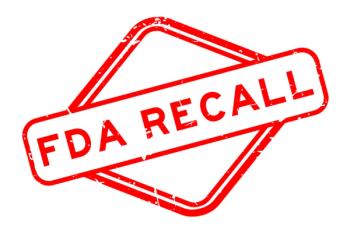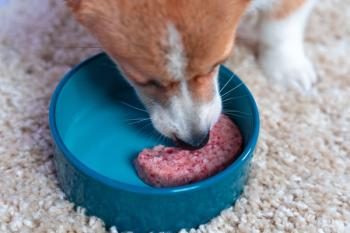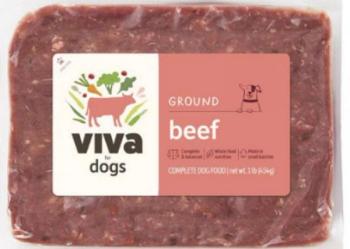
Life after the pet-food recall
A nationwide network of veterinary toxicology laboratories, each with similar testing capabilities and an efficient communication system, could become one of the best weapons to help ward off another major pet-food crisis, even helping protect the human food supply against a serious poisoning outbreak.
A nationwide network of veterinary toxicology laboratories, each with similar testing capabilities and an efficient communication system, could become one of the best weapons to help ward off another major pet-food crisis, even helping protect the human food supply against a serious poisoning outbreak.
'NAHLN Tox' mission statement
That's the key argument a work group within the American Association of Veterinary Laboratory Diagnosticians (AAVLD) makes in a white paper proposing such a network and the federal funds needed to support it.
As much as that network is needed, though, alert local veterinarians will continue to be part of the nation's first line of defense against any future toxicology emergency just as they are now, says Dr. Stephen B. Hooser, DVM, PhD, Dipl. ABVT, head of the toxicology section and assistant director of the Animal Disease Diagnostic Laboratory at Purdue University.
The laboratory network envisioned by Hooser and other members of the AAVLD work group he chaired would operate within the National Animal Health Laboratory Network (NAHLN), a chain of 58 state and university laboratories set up in 2002 in cooperation with U.S. Department of Agriculture agencies to protect against the spread of infectious animal diseases.
The network, called "NAHLN Tox" in the white paper, would operate much like the Food Emergency Response Network (FERN) laboratory system, which also works within NAHLN but focuses on food issues. NAHLN Tox would deal with animal-health issues, and would be able to expand the capacity of FERN if needed, Hooser says.
The white paper proposes additional federal funding to expand the scope of NAHLN beyond infectious diseases to include toxins.
DVM Newsmagazine asked Hooser several questions on this and related proposals in the AAVLD white paper. Here are his responses:
Q: Isn't the NAHLN already prepared to watch for toxic agents entering the animal food supply?
A: Many individual state veterinary diagnostic laboratories and other NAHLN laboratories do have the capacity to test for many toxins and do so on a regular basis in their own states. But their analytical capabilities, equipment and personnel vary widely.
The reporting requirements for a diagnosis of an animal poisoning also vary between different states. Unlike infectious diseases, for which there are very specific reportable diseases, most toxicants, in most states, do not have reporting requirements (other than those on the USDA/HHS Select List).
In addition, there is no formal network among these labs to exchange information or to notify other labs of their toxicological findings. It is a monumental task to get the different information systems of each lab to communicate with each other. As it stands, the NAHLN system is geared toward infectious diseases. Incorporating toxicants into the communication system would require additional efforts.
Q: How much funding would be needed to accomplish this, and exactly how would the money be used?
A: As a very rough estimate, it would require about $6 million in one-time funds for equipment and expendable supplies and about $6 million in recurring funds for personnel and supplies to bring a number of the existing laboratories up to the same level so that they could have the personnel and equipment to develop and validate chemical analyses of toxicants of interest, perform analytical testing and then communicate those results to other NAHLN members. Those toxicology funds would be in addition to the current needs of NAHLN.
Q: The white paper mentions seven laboratories for which funding would be sought initially. Which labs are they, and why were they chosen?
A: To be able to produce the white paper and circulate it in a timely manner, we needed to write it in a short period — before it was possible to conduct a survey of current capabilities and needs. To roughly calculate the monies it might take to fund the toxicology component of NAHLN, it was expedient to make the estimation based on the amounts it would take to fund about seven analytical toxicology laboratories. It was not determined in advance which those might be. Given sufficient resources, I hope it might be possible for the funds to be split and portions disbursed to more than seven laboratories.
Of course, it is very unlikely that federal monies will become available to fully equip and staff all of the veterinary oxicology laboratories across the country. However, if funds for NAHLN Tox do become available, I hope they would be distributed in some type of competitive manner, while keeping in mind that we are very early in the process of trying to obtain federal funding and unknown factors could change it as the process develops.
Now that the white paper is finished and circulated, we are finalizing a survey of current capabilities and needs in veterinary toxicology laboratories around the United States. We hope to be able to send this out to NAHLN laboratories and have the survey results early in 2008.
Q: Can you elaborate on what you mean by good communication among the network of toxicology labs? Is that lacking at present?
A: Over the years, laboratories that now do toxicology testing have had differences in funding and in their abilities to purchase state-of-the-art equipment and hire the highly trained personnel needed to run these sophisticated instruments. To be able to consistently analyze diagnostic samples and have confidence that the results will be the same among all the labs, they all need to have the same equipment with personnel trained to use that equipment, all running the same validated analytical methods. Finally, they need to have a secure way of communicating results with other labs for confirmation and for reporting results to the appropriate authorities.
Q: You also mention in the paper "contingency funds" to cover testing in situations such as last year's widespread pet-food contamination. Would these funds be in addition to those just mentioned?
A: A problem that developed during the melamine pet-food contamination last year was that few veterinary toxicology labs had both the equipment and personnel required to develop the test for both melamine and cyanuric acid. These labs were quickly overwhelmed by the numbers of samples they received. It would be very good to have contingency funds for hiring temporary personnel, purchasing reagents and chemical standards. In addition, because of the costs of testing, it would be good to have funds to help pet owners pay for the actual cost of analytical testing; otherwise, some might not be able to afford it. Funds for this would be included in the recurring funds.
Q: To summarize, should another toxic contamination of pet foods occur, perhaps even more serious than last year's, how would the steps you propose in the white paper better address it?
A: If another such problem occurred and the toxicology network as described were in place, the trained personnel would be able to provide rapid recognition of new and emerging adverse chemical events, develop and validate new analytical methods for those toxicants if needed and thereby be able to identify the causes of the toxicoses and effectively communicate their findings to decision-making agencies.
Q: Any additional thoughts on improving surveillance of toxins entering the animal food supply? Could the system you propose also help protect humans?
A: Many high-consequence pathogenic infectious agents, such as foot-and-mouth disease and classical swine fever, can be identified in advance and monitored. Similarly, provided the necessary equipment and personnel, we could more effectively test for those toxicants we know in advance are possible sources of food poisoning. However, as was shown with the melamine/cyanuric acid pet-food contamination, it is unlikely that we will be able to identify in advance the many chemicals that, alone or in combination, could cause adverse health consequences in our animals. Subsequently, it also is unlikely, given our current technology, that we will easily be able to test for all possible toxic chemicals from all possible sources.
Therefore, our best means of surveillance for incidences of new and/or previously unrecognized toxicoses will continue to be the vigilance of practicing veterinarians at all levels, and their communication with veterinary diagnosticians and state/federal officials.
Once these outbreaks are recognized, the toxicology component of the NAHLN will be in place to rapidly identify the cause, develop and validate new analytical methods, perform large numbers of analyses in a wide variety of samples and communicate those findings to the appropriate officials.
As was the case with the melamine/cyanuric acid contamination, the problem did not end with the discovery of the causative agent in the pet food.
It was discovered that contaminated feed also made its way into food animals and therefore there was the possibility of contamination of the human food supply. This chemical contamination of livestock feed was not an isolated incident.
Improved analytical testing capabilities at veterinary diagnostic laboratories also will help protect the nation's (human) food supply.
Newsletter
From exam room tips to practice management insights, get trusted veterinary news delivered straight to your inbox—subscribe to dvm360.




